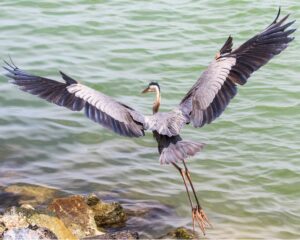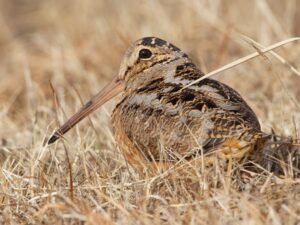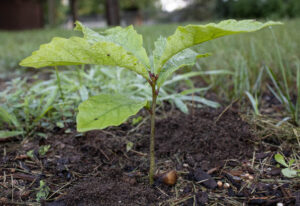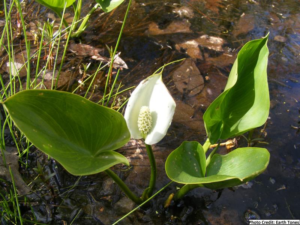By Ariana Zimney, summer intern
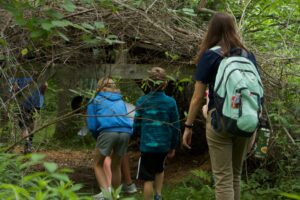 “Leave No Trace” principles really can be a simple change while out exploring. Some people are not aware of its positive reinforcements to treating nature with kindness and gratitude, nor do they realize the large impact they have on the natural world. The “Leave No Trace” movement may not be as talked about as it should be, so let’s change the narrative!
“Leave No Trace” principles really can be a simple change while out exploring. Some people are not aware of its positive reinforcements to treating nature with kindness and gratitude, nor do they realize the large impact they have on the natural world. The “Leave No Trace” movement may not be as talked about as it should be, so let’s change the narrative!
This summer, Woodland Dunes offered a Free Play Camp where campers were able to learn about and utilize the new knowledge of this principle. They got to choose their own adventure for much of the camp, but during the personal exploration they were reminded to uphold LNT principles for the group. Campers were also encouraged to share their knowledge with others around them while exploring. So, I present to you simple “Leave No Trace” principles you and your fellow explorers can use just like our explorers did!
First and foremost, Know Before You Go. It is always a good idea to be prepared for your journey. Our trail-goers used a map in the building to check the distance they would be walking, terrains they would encounter, and gauge if they had all of the appropriate materials with them. Secondly, we focused on Choosing The Right Path. Campers understood that it was important to stay on main, established trails as it is critical for safety of both camper and animal. Staying on trail also protects the native flowers, trees, and potential nests that could be on the ground. They didn’t want to disturb local animals and plants as “this is their home too!” And this leads us to Respect Wildlife. Campers were able to see a variety of wildlife, like our friendly Dunes mink, and observed it from a safe distance.
While out on a hike down Conifer, we came across some trash that was along the trail, and campers were determined to see it cleaned up, which is phenomenal since another LNT principle is Trash Your Trash. Pack it in, pack it out is the slogan, reminding people that if you bring it in, you can just as easily carry it back out with you. Along with this, campers were also encouraged to Leave What You Find. One camper found a Cooper’s Hawk feather and wanted to take it home. They were reminded by another explorer to leave it for the next lucky person to find and investigate it. Campers working together to uphold these critical principles, woohoo!
Lastly, but perhaps the Golden Rule of them all, everyone was to Be Kind To Others. Making sure the fun they were having did not interfere with other’s adventures, animal homes or trails, and making sure everyone was included in the experience. Double checking that no campers were falling behind, or ensuring that all campers were joining in on the fun, everyone would be guaranteed to have a great time!
The Leave No Trace website (lnt.org) says that their goal is to empower people to be the solution to conservation. And what better way to start than here at camp, surrounded by friends and nature alike, striving for a better tomorrow with action today!

